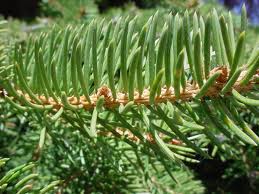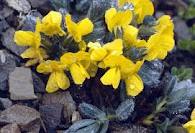Picea
Pot Cultivation
Spruce trees need a relatively pure atmosphere to survive. They will die if they are covered with soot or other impurities. Some Spruce will grow on dry soil, but they will do much better if the soil never gets very dry. If these trees are going to be planted in a forest, they should be planted when they are 9 to 15 inches high. Plant them in very small holes and mix in a few ounces of superphosphate. Spruces intended for the garden can be planted when 3 or 4 feet high. Larger plants can even be transplanted by skilled gardeners. Spruces form compact balls of fibrous roots that make transplanting them with minimum shock possible. The best time to plant them is in early spring, before new growth begins, or from late August until mid-fall. Planting too late in the fall is not advisable because the plants don't have time to become well established before the beginning of winter. Except for very small plants, Spruce shouldn't be moved until they are balled and burlapped with a good, unbroken ball of soil attached to the roots. For trees grown as ornament, holes that are 2 feet or more deep and at least a foot wider all around than the ball of soil should be dug. If the soil is poor, dig larger holes and add good dirt. The balls of soil should be set in an inch deeper than they were previously growing. Pack soil along with compost or other organic matter around it and soak thoroughly with water. Mulch the surface with peat moss, leaf mold, compost, or other material. Make sure to soak the ground completely during dry periods for the first year or two until they become well established.Propagation
Wild types may be increased by seeds sown in friable (fine, crumbly) soil. Seeds take from 2 to 4 weeks to germinate, so time them accordingly that once they've sprouted there will be no more danger from frost. Don't plant your seeds on ground where water accumulates. Beds, 3 to 4 feet wide and 12 to 15 inches apart, should be made. Sow the seeds thinly and cover with a �-inch of soil or coarse sand. It would be beneficial to protect the seedbeds from harsh sun or excessive frost by covering with slat shades. Seeds may also be started in containers in a frame or greenhouse. Hybrids may be increased by grafting on stocks of their types that have been established in containers or by cuttings. Grafting is accomplished under glass in the spring or winter. The stocks should be established in pots and brought into a warm greenhouse a few weeks beforehand. Erect shoots should be used for scions when possible and regular side grafting may be practiced. When the union is complete, they should be placed in a cold frame and eventually in a nursery border. Cuttings of the dwarf kinds of the common and Oriental Spruces can be rooted in late summer and fall. Short side shoots, 2 inches long, are inserted in a bed of sand in a propagating case in a greenhouse. Once they've formed roots, they are potted separately in small containers. Layering isn't usually done with Spruce, though they root very well this way. As a matter of fact, the lower branches of some kinds take root when in contact with the ground. Pruning isn't really required unless the tree begins to form more than one trunk. Lower branches should be cut off if they start to die. |
 |
P. pungens |
P. Smithiana |
VARIETIES
P. orientalis (Oriental Spruce) & dwarf var. aurea, nana, pygmaea, aureo-spicata.
P. Engelmannii & var. argentea, glauca, Fendleri.
(The Blue Spruces) P. pungens (Colorado Spruce) & var. glauca, caerulea, argentea, Kosteriana; P. glauca R. H. Montgomery (dwarf kind).
(Japanese Spruces) P. bicolor; P. Glehnii; P. jezoensis; P. Maximowiczii; P. polita (Tigertail Spruce); P. Schrenkiana.
P. obovata (Siberian Spruce); P. Smithiana (Himalayan Spruce); P. spinulosa (Sikkim Spruce); P. glauca (White Spruce); P. rubens (Red Spruce); P. mariana (Black Spruce); P. sitchensis (Sitka Spruce); P. Breweriana; P. Omorika (Servian Spruce); P. asperata; P. brachytyla; P. Koyamai; P. likiangensis; P. morrisonicola.




